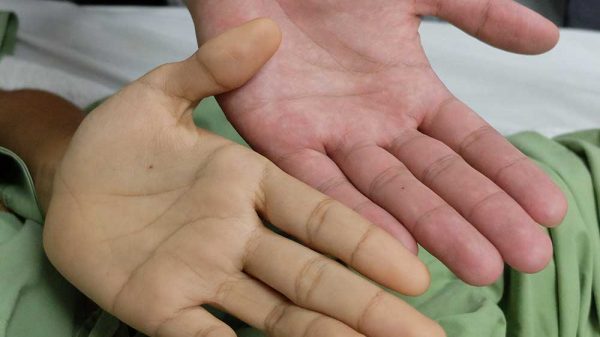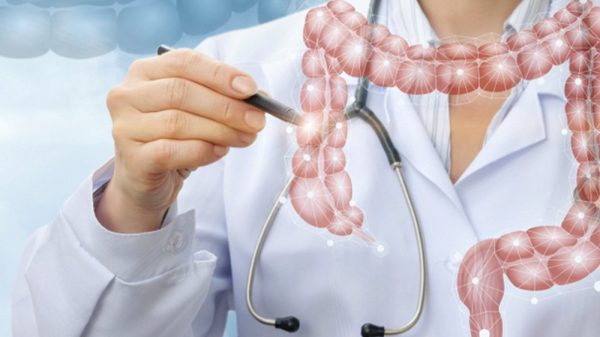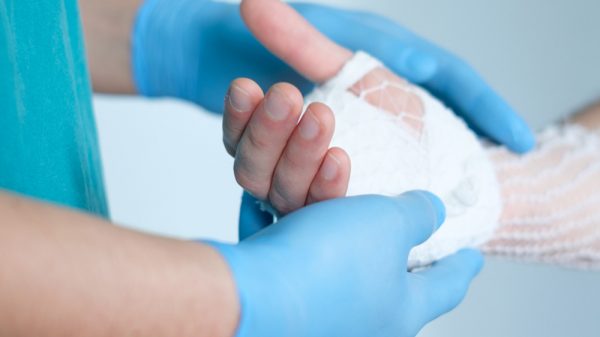If you’ve been diagnosed with endometriosis, you are probably wondering what can be done to treat it. Maybe your doctor has even recommended surgery for endometriosis. If you’re looking for information about what to expect with endometriosis surgery, you’ve come to the right place. Here we answer all of your questions about endometriosis surgery and endometriosis surgery recovery.
Endometriosis Overview
If you have endometriosis, you are likely experiencing a plethora of highly painful and potentially life-altering symptoms.
So, what does it mean to have endometriosis? If you have endometriosis, the lining of your uterus (called the endometrium) begins growing in other areas outside of your uterus. Basically, uterine tissue begins growing in places that it shouldn’t. Endometrial tissue may begin growing on fallopian tubes, ovaries, ureters, and even other internal organs located in the abdominal cavity.
Every month during your period, all of these endometrial growths will also begin to bleed, causing intense pain. Symptoms of endometriosis include severe menstrual and pelvic pain, bloating, very short menstrual cycles that last just a few weeks, and fatigue. These symptoms can impact a woman’s ability to carry out normal daily activities, such as household chores, work, and school.
Endometriosis is generally described in stages or degrees of severity. Mild or stage 1 endometriosis generally only includes very superficial growths. Moderate or stage 2 endometriosis is characterized by a larger number of deeper growths. As expected, severe endometriosis is labeled as stage 3 or 4 and is characterized by a high number of deeper growths as well as endometrial cysts on the ovaries. It’s important to keep in mind that the stage of endometriosis doesn’t necessarily correlate with the level of pain experienced. For example, you may have a very mild case of endometriosis and still experience excruciating pelvic pain during every period.
Over time, endometrial growths can worsen and result in the development of scar tissues and endometriomas, and cysts. These cysts can be described as small pockets of endometrial tissue and fluid that build up over time. If mild endometriosis is left untreated, it can progress to severe endometriosis and impact pregnancy rates and fertility.
For more information about endometriosis and associated symptoms, check out our other article about endometriosis signs and symptoms.
Treatment Methods and When Surgery Is Recommended
There are numerous treatment methods for treating endometriosis as well as endometriosis pain management.
Hormone therapy is the first line of treatment for managing mild to moderate endometriosis and its symptoms. Your gynecologist may prescribe birth control pills that provide progestin and a small dose of estrogen. Birth control pills effectively manage endometriosis by reducing the thickening of the uterine lining every month, making periods shorter, lighter, and overall more manageable. In some cases, birth control may stop periods altogether. This greatly reduces pain for endometriosis patients. In conjunction with hormonal interventions, NSAIDs like ibuprofen may help manage residual pain and inflammation.

Types of Surgery for Endometriosis
Several procedures effectively deal with endometriosis, though your doctor will advise you on the best surgical procedure for your specific case. Generally, surgery is suggested for women who are having difficulty getting pregnant because of endometrial implants on their fallopian tubes and ovaries. Typically, surgery is suggested for women with moderate to severe cases of endometriosis.
Surgical management for endometriosis is highly effective and is a minimally invasive surgery.
There are several different surgical techniques for managing endometriosis. A hysterectomy is reserved for serious cases of endometriosis. Since a hysterectomy involves removing a woman’s uterus, it is a surgery that is reserved for women who have already had children or are past childbearing age. An oophorectomy may also be required for individuals with severe growths on their ovaries. Though these procedures may be effective in some cases, keep in mind that removing the reproductive organs is usually a last-resort technique.
Laparoscopic techniques are far more common and involve removing the growths. This kind of surgery may involve ablation or excision. Ablation involves essentially burning the growth off of the organ. On the other hand, excision is more involved and removes the entire growth, requiring a deeper cut. Excision recovery time is generally longer than the recovery time for ablation.
Since laparoscopic surgery is the more common form of surgery, we focus primarily on what to expect with laparoscopic surgery for endometriosis.
What to Expect with Laparoscopic Surgery for Endometriosis
So, you’ve set a surgery date with your doctor, and you’re planning to undergo surgery to remove endometrial growths. First of all, congratulations on taking this huge step towards recovery. It is definitely scary, but it will be worth it. You may have many questions about what to expect before, during, and after surgery. Here we guide you through what you need to know about endometriosis surgery. Being informed is always empowering and helps things seem less daunting.
Before Surgery
Before you are booked for surgery, you will likely have a call with a health care professional the week before, to make sure you are completely comfortable and understand pre-surgery steps. Your physician or a health care professional will also conduct bloodwork to ensure that you are all cleared and in good shape to undergo surgery and general anesthesia.
The health care professional will go over any medications and supplements you may be taking and let you know what you should and shouldn’t take on the days leading up to the surgery. About 12 hours prior to surgery, you will be advised to avoid eating and only drink clear fluids. In the 2 hours before surgery, you will be advised not to ingest any food or beverages, including water. These guidelines help prevent nausea and vomiting during the procedure.
During the Surgery
During laparoscopic surgery, you will be placed under general anesthesia. This means that you won’t feel anything, and you also won’t remember anything after the procedure is complete. Essentially you are unconscious during this time. A surgeon will perform your laparoscopic endometriosis surgery by making one or more small incisions in your abdomen. The surgeon will then insert a small instrument, including a camera, through the incision. This allows the surgeon to get a good view of where the growths are located to remove them successfully.
The surgeon will then use the small tool to cut out the endometrial growths and ensure that all have been removed before finishing the surgery. After all of the growths have been cut out, the surgeon will then remove the instruments, stitch up the incisions in your abdomen, and you will be moved to the recovery area of the hospital.
After the Surgery
Following the surgery, it will take you a little while to regain consciousness. When you do regain consciousness, you will likely feel soreness in your abdominal area, and you will likely feel very nauseous. The nausea is a very common side effect of anesthesia and should wear off within 24 hours. Your physician or nurse will also likely administer prescription pain relief as well as anti-nausea pills. After you are monitored to make sure you’re on the road to recovery, you will be discharged from the hospital to continue your recovery at home.
Tips for Laparoscopic Surgery Recovery: Diet, Lifestyle, and More
Check out the tips below to get ideas for how to support fast and complete recovery.
1. Don’t Overdo It with Food After Surgery
Because you will likely be feeling nauseous after surgery, it’s a good idea not to eat too much food directly following surgery. Since the surgery you just received was abdominal surgery, it’s possible that you will experience some digestive upset as a result. Even though your stomach and digestive system may not have been directly operated on, interference with other organs can still extend to your digestive system. It’s a good idea to take it easy on your stomach and the days following the surgery.
2. Take Care of Your Wounds
The incisions made during laparoscopic surgery will need several weeks to heal. It’s important to keep them clean and dry, especially in the first few days after surgery, when the tissue is very vulnerable to infection. As the wounds begin to heal up and as your physician advises, you can begin applying moisturizer to help prevent the development of scar tissue.
3. Avoid Rigorous Exercise
In the weeks following your laparoscopic surgery, it’s a good idea to avoid engaging in too much rigorous exercise. Participating and this kind of exercise can leave your skin more prone to injury. Engaging in vigorous exercise increases the risk of opening up your incisions, which can delay healing time and increase the risk of infection.
Plus, it’s important to allow your internal organs to heal as well. Depending on your specific case of endometriosis, your recovery time may vary from a few weeks to 10 weeks. If your growths were deeply implanted in the skin, this means the surgeon had to make a deeper cut to remove the entire growth. This will result in a longer healing time and a greater sensitivity to rigorous exercise. It’s important to stay mindful of the recovery process and listen to all of your doctor’s advice about what activities to avoid during this time. Engaging in too much exercise can lead to ripping and tearing of both your external and internal wounds.
4. Get Plenty of Rest
Healing is absolutely impossible without adequate amounts of rest. If you feel sleepy and sluggish in the days and weeks following surgery, understand that this is a perfectly normal part of the healing process. In fact, increased tiredness is your body’s way of signaling to you that it needs more rest than usual.
While you are sleeping and resting, your body is hard at work repairing the surgical wounds. Your body needs this downtime to channel energy and resources towards repairing tissues damaged during surgery, instead of channeling resources towards repairing from the day’s activities. During rest, the immune system utilizes amino acids and other nutrients to repair damaged tissues.
5. Eat Healthy Foods
Eating healthy foods is a vital part of recovery from any surgery, including endometriosis. There are several pillars of the healthiest post-surgery diet. Here are some tips for choosing what foods to eat in the weeks following surgery:
- Choose high-fiber foods: In the weeks after surgery, your digestive system may be affected by a condition called ileus. Ileus is common after any type of abdominal surgery and means that the digestive organs temporarily stop functioning. After abdominal surgery, the organs are temporarily “stunned.” In order to channel energy and resources towards the healing organs, the digestive system becomes much less active. This can result in bloating and constipation. However, eating high-fiber foods can help encourage digestive activity and support the movement of food through the digestive tract. Excellent sources of whole grains include fruits, vegetables, whole grains, nuts, seeds, and beans.
- Eat plenty of fruits and vegetables: Fruits and vegetables are rich in compounds called antioxidants. Antioxidants exhibit potent activity that supports the immune system and the healing process. When we experience any kind of stress, including physical stress from a surgery or injury, our cells are experiencing oxidative damage. This means that the cells at the site of the surgical wounds are a bit more damaged and not functioning as efficiently as normal. When cells experience oxidative damage, waste products build up in the cell and inflict further damage. To clear the cells of waste and encourage the most efficient functioning, it’s important to eat plenty of antioxidants. As the name suggests, antioxidants fight against oxidative damage. Antioxidants operate by neutralizing the free radicals that inflict damage on cells and their organelles. Polyphenols present in fruits and veggies are critical in the healing process because they exhibit potent antioxidant activity. To expedite healing time, add various fruits and veggies to your diets such as blueberries, raspberries, blackberries, cherries, red grapes, pomegranate, kale, spinach, broccoli, cauliflower, zucchini, and sweet potato.
- Eat foods rich in omega-3 fatty acids: Omega-3 fatty acids have a powerful anti-inflammatory effect on the immune system as well as all organ systems. Omega-3 fatty acids have been shown to play an instrumental role in helping reverse metabolic diseases such as insulin resistance and fatty liver disease. It’s no wonder that omega-3 fatty acids also play a critical role in supporting cellular repair and healing from surgeries. Omega-3 fatty acids are a healthy kind of polyunsaturated fat, and they can be found in both animal sources and plant sources. EPA and DHA are the animal sources of omega-3 fatty acids, and they are found primarily in fatty fish such as salmon, mackerel, Arctic char, and tuna. ALA is the plant form of omega-3 fatty acids found in seasoned nuts such as flax seeds, chia seeds, walnuts, and pecans. Interestingly, omega-3 fatty acids can help reduce inflammation associated with endometriosis and may help prevent further endometrial growth.
- Choose high-quality proteins: While your activity level is compromised during recovery, you want to make sure that you lose as little muscle mass as possible. Maintaining lean muscle mass is crucial for supporting your strength following surgery and supporting the immune system during the healing process. Eating enough protein that affords optimal ratios of essential amino acids is an effective way to ensure that your body keeps its lean muscle tissue. Plus, essential amino acids are vital in supporting the immune system in repairing connective tissue and skin tissue. On top of that, essential amino acids are crucial for the synthesis of hormones and neurotransmitters. To get optimal ratios of essential amino acids in your diet, reach for low-fat dairy and lean meats. Fatty fish also affords optimal ratios of essential amino acids. Plant-based foods like nuts, seeds, beans, whole grains, and soy protein also provide essential amino acids but must be combined throughout the day in order to obtain ideal ratios. Supplementation with a high-quality essential amino acid powder is an efficient way to get the amino acids you need since they don’t require digestion.
6. Reach Out for Support
Experiencing endometriosis and going through surgical procedures can be taxing on your mental and emotional health. Connecting with others through online support forums or in-person support groups is one way to share your story and get advice from others about how they managed their experience with endometriosis.
If you’re looking for a helpful story following one woman’s journey with endometriosis, check out Courtney Budzyn’s YouTube channel. She provides tons of helpful and informative videos on her channel, detailing her experience with endometriosis and treatments. (1)
Endometriosis Surgery and Recovery: Conclusion
Endometriosis is a tough disease to deal with. Undergoing laparoscopic surgery for endometriosis can be daunting, but it helps to know what to expect and tips for a healthy recovery. Throughout your journey, it’s important to eat healthy foods rich in antioxidants and protein, get plenty of rest, and connect with others who share similar experiences. Even though surgery can be frightening, remember that this surgery is designed to improve your quality of life. Once you’ve recovered, you will likely experience improved energy levels, less pain, and improved fertility.
References























